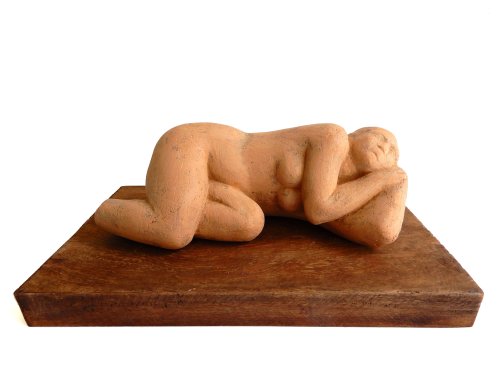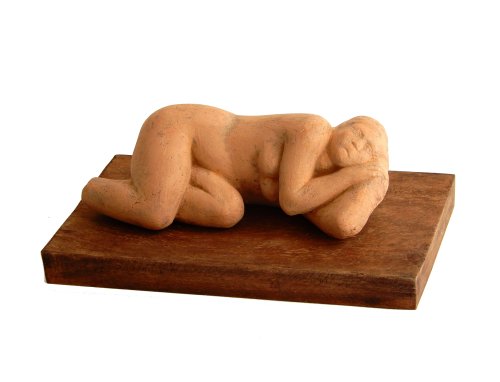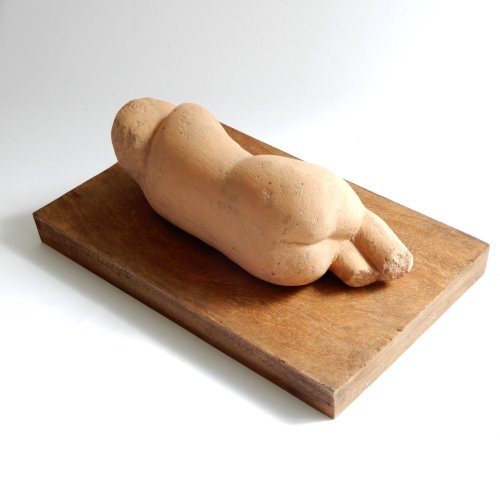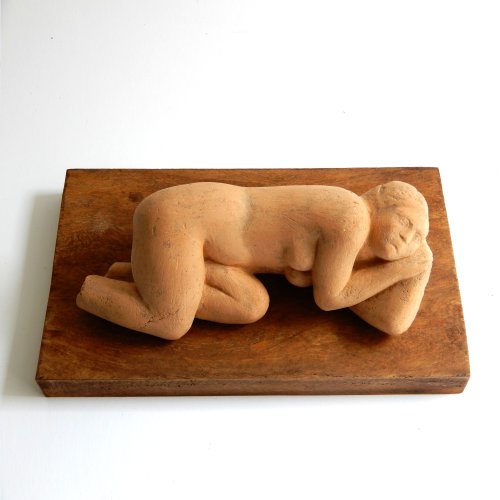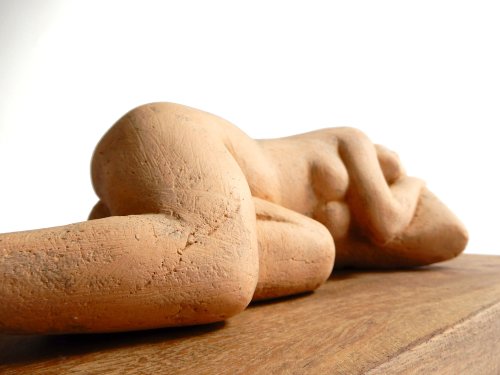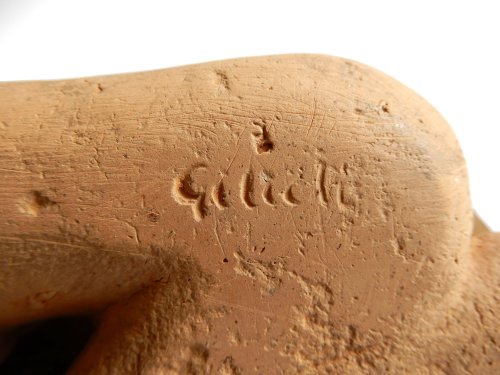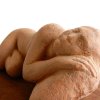Emile Gilioli (1911-1977) Reclining nude
About this piece
Remarkable and rare work by the famous sculptor Emile Gilioli.
This is an early piece that he created during the war years while he was forced to stay in Grenoble. During this period, he made several terracotta nudes like this one, always using the same model.
In 2006, several works were auctioned from the collection of Madame G. Charlon from Grenoble. Unfortunately, it is not known if she owned them all this time.
I have had this reclining nude in my home for several months now, and it moves me deeply, it has a kind of tenderness. I think it’s the way the woman lies there, completely relaxed yet also vulnerable.
Gilioli signed the piece on one of the legs.
Whether the legs are intended to look like this, I cannot say with certainty, but I suspect they are. Also because of the composition. However, this cannot be definitively confirmed.
Biography:
Émile Gilioli (1911-1977) was a French sculptor, known for his lyrical abstract style and as a prominent figure of the post-war École de Paris.
Born on June 10, 1911, in Paris, Gilioli grew up in a family of Italian shoemakers. After the First World War, the family moved to Nice, where he attended the École des Arts Décoratifs. There, he was influenced by artists such as Marie Raymond.
During the Second World War, Gilioli was stationed in Grenoble, where he became acquainted with curator Andry Farcy, who introduced him to Cubism. After the war, he settled in Saint-Martin-de-la-Cluze, where he maintained his studio and was influenced by the French Resistance movement.
In 1947, Gilioli exhibited at the Salon des Réalités Nouvelles in Paris, a platform for abstract art. He also participated in the first Salon de la Jeune Sculpture in 1949, alongside artists such as Emmanuel Auricoste and Étienne Hajdu.
Gilioli's work is characterized by geometric shapes and clean lines, often with a smooth finish reminiscent of polished pebbles. His sculptures reflect a pursuit of pure forms and rhythm in space, using materials such as marble, granite, and bronze.
Some of Gilioli's notable works include monuments commemorating the Second World War, such as the Monument for the Fallen in Voreppe (1946) and the Monument on the Plateau des Glières (1973).
His works are part of the collections of museums such as the Centre Georges-Pompidou in Paris and the Tate Gallery in London.
Gilioli passed away on January 19, 1977, in Paris. In his memory, his studio in Saint-Martin-de-la-Cluze was transformed into a museum and library, housing a permanent exhibition of his work.
His contributions to abstract sculpture and his unique approach to form and space remain influential in the art world.
Literature:
- Valérie-Anne Sircoulomb-Müller: "L'œuvre sculpté d'Émile Gilioli : catalogue raisonné", 1995
- Lydia Harambourg; "Émile Gilioli: la rigueur et le rêve", 2004
Condition
Good
Material:
terracotta
Measurements:
Length: 23 cm
(9,06")
Height: 8,5 cm
(3,35")
Depth: 9 cm
(3,54")
base:
Length: 28 cm
(11,02")
Width: 18 cm
(7,09")
Height: 2,5 cm
(98")
Period:
1941-1945
Origin:
France
Artist / atelier:
Emile Gilioli,
